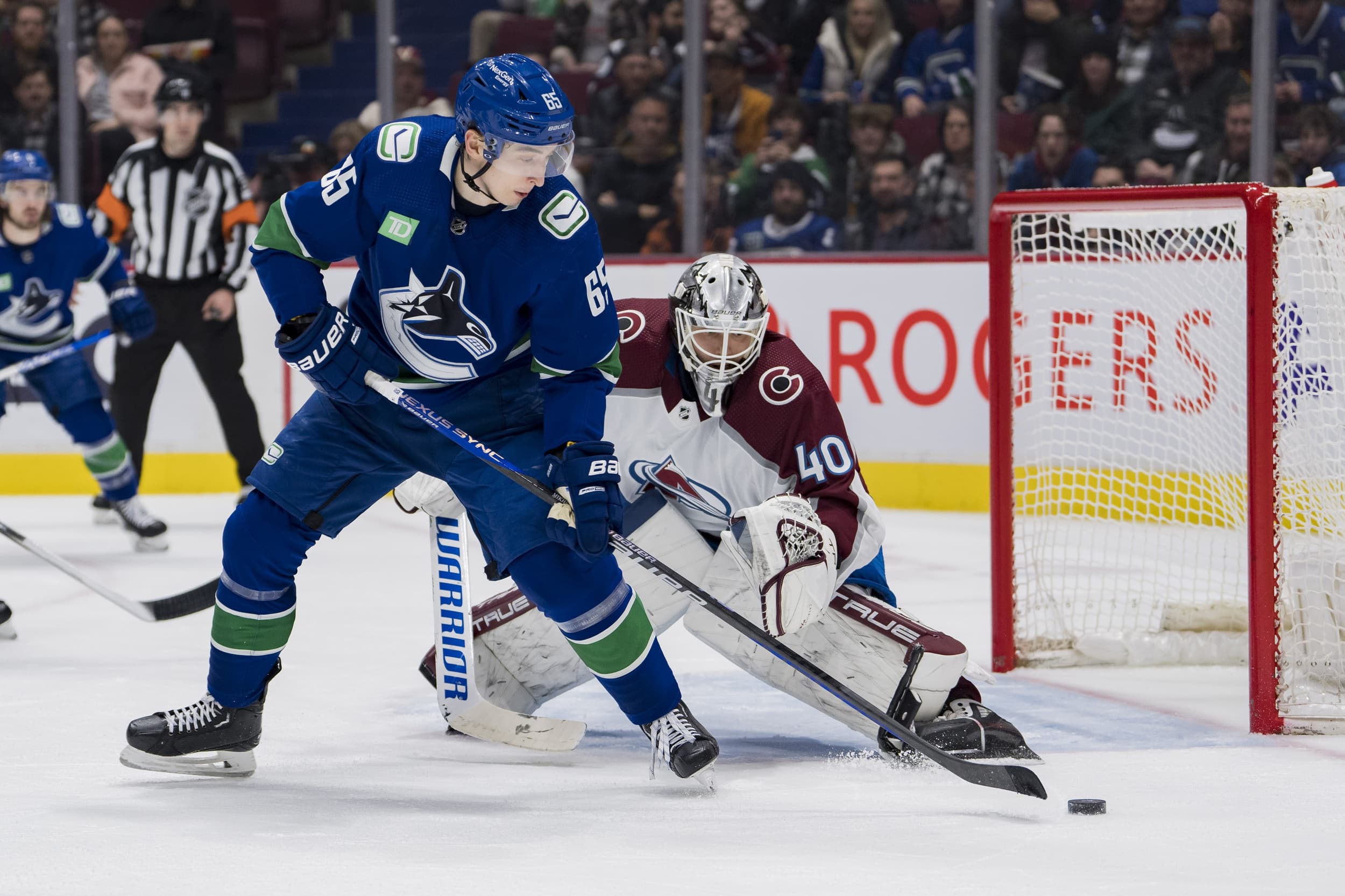Suddenly, the Vancouver Canucks are flush with something that they haven’t had in a good, long while: cap space.
Well, kinda.
What the Canucks actually have on their hands is a bunch of potential cap space. As it stands, the Canucks are $3.77 million over the cap, with Micheal Ferland and Tucker Poolman’s collective $6 million in salary on LTIR, giving them an effective $2.23 million of deadline cap space.
However, Tanner Pearson and Ilya Mikheyev have recently been declared out for the remainder of the season, and yet they remain on the IR, instead of the LTIR. Players on IR offer no cap relief, they just don’t take up a roster spot.
At any point, the Canucks can retroactively place Pearson and/or Mikheyev on LTIR. In doing so, they would add a full $8 million to their LTIR relief pool and thus to their Trade Deadline cap space. With everyone on LTIR, the Canucks would have more than $10 million in deadline spending money.
So why hasn’t it happened already?
That Pearson and Mikheyev remain on IR when there’s no chance of them playing again this season suggests that the team is trying to reduce their LTIR expenditures, not increase them. It seems that the Canucks’ goal is to actually get under the salary cap ceiling via a couple of deadline deals, which would allow them to get out of LTIR altogether and finally start accruing banked cap space again.
To do this, the Canucks would just have to cut that $3.77 million off the books, which seems simple enough. Trade Bo Horvat with less than $2 million in salary returning, and the job is done.
The Canucks’ reasoning for this is also fairly easy to figure out. Andrei Kuzmenko has no doubt hit every single one of his potential bonuses on his one-year ELC. That means an additional $850K cap hit from him, which will have to be applied to next year’s cap if the Canucks can’t find the room this year.
Accrue that $850K before the deadline, and Kuzmenko’s bonus gets counted against the cap this year.
But is saving that cap space for the 2024/25 campaign really worth the effort? Especially when there might be a much better and more lucrative use of cap space available to them in the here and now?
It’s no secret that cap space is among the more valuable resources in the league today. More than half of the league is operating above the cap ceiling via LTIR, and the demand for additional breathing room is only going to increase as the deadline approaches and teams attempt to finalize their roster.
With a potential $10+ million on their hands, the Canucks could become dealers of cap space, and that could land them some badly needed picks and prospects.
The most direct way to do this would be to take on some expiring cap dumps from teams attempting to carve out more space for other trades. This could be a case of the Canucks accepting a cap dump as part of the trade of someone like Horvat — resulting in a greater yield of future assets in return — or it could involve the Canucks becoming a third party to another set of deals.
Either way, the basic exchange is simple and well-practiced. The Canucks house an undesirable contract for the remainder of the season, a more competitive team gets cap space, and the Canucks are compensated with appropriate picks.
Everybody wins.
The Canucks could also use salary retention to sell their LTIR space. Currently, the Canucks have all three of their retention slots free and available to use. Any retention placed on a one-year contract now only stays on the books for a few months and then disappears — but the picks and prospects gleaned from selling that retention stick around.
Again, this could be done directly or indirectly. The Canucks could retain salary on one of their own expiring players, like Horvat, to allow the acquiring team even more space to load up for Cup contention.
Alternatively, the Canucks could become a retention mediator in the middle of a three-way trade. This is typically done around the deadline, and can be used to reduce a player’s cap hit down to 25% of its former value.
In short, Team A retains a portion of a player’s salary, then trades that player to Vancouver, who retain whatever else is needed. Then, Vancouver sends that player on to Team B, who gets them at a neatly reduced cap hit for the rest of the season and into the playoffs.
Depending on the nature of the deal, either side might compensate Vancouver for their trouble, and sometimes both.
On the one hand, it does make sense for the Canucks to keep an eye on their future cap space and do what they can to ensure maximum flexibility this upcoming offseason. On the other hand, the organization is so short on picks and prospects that it really can’t afford to pass up any opportunity to acquire them.
Maximizing deadline LTIR relief and then selling it in the short-term is a low-risk, months-long process that could prove very lucrative if the Canucks play their cards right.
That should prove more valuable in the long run than just saving $850K off the cap next year.


